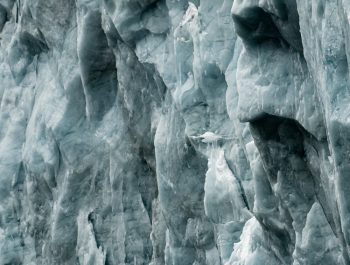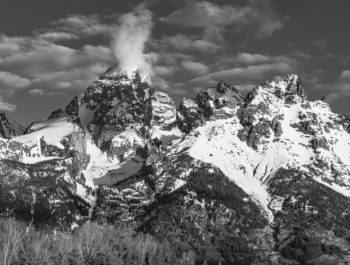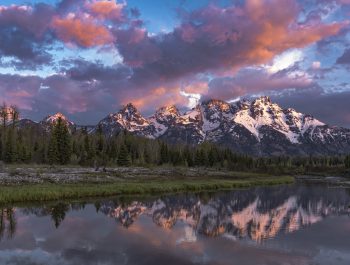My First Major Photography Trip Since 2019 Part II – Yellowstone NP, Wyoming
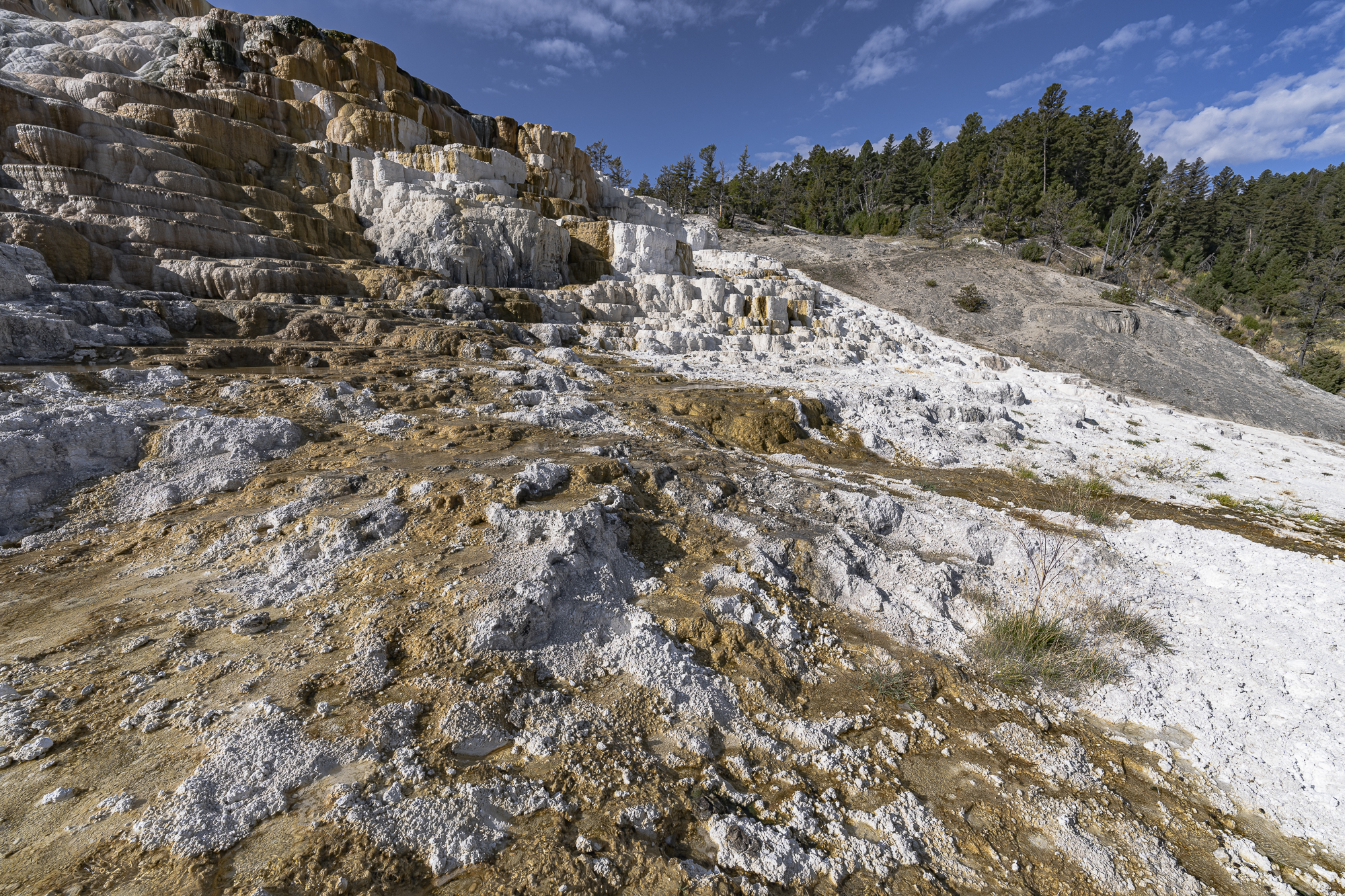
This is Part II of a 4-part article on my recent trip to the three National Parks in Wyoming and Montana, my first photography venture beyond Arizona since 2019. I hadn’t visited Teton NP and Yellowstone NP for over five years. Though near Glacier NP three years ago, I hadn’t been inside that park for over 15 years. Because it had been a long time, and because my immediate priority was to photograph wildlife with my Sony Alpha 1 camera and 200-600mm f5.6-6.3 G lens, I looked forward to this trip more eagerly than usual. Capturing Fall color along the way was a secondary aim, though it turned out to be the highlight during the three-week period, as wildlife proved hard to find.
The three parks were filled with abnormally sizeable crowds and traffic, while smoke and haze generated by extensive forest fires still lingered in the Teton-Yellowstone eco-system. (Read the Prologue to the opening article in this 4-part series.)
Conditions in Teton NP made me realize that there would be few opportunities to capture quality wildlife and landscape images in Yellowstone within the two days I would spend there. Therefore, I decided to photograph the forms and textures of the Mammoth Hot Springs Terraces where haze would not be a factor. I was also eager to exploit the unique capabilities of my new Sony 14mm f1.8 GM lens in ways not often attempted for this focal length.
The beauty of this lens is its ultrawide coverage of any landscape plus its corner-to-corner sharpness at an aperture of f2.8 and smaller, and its outstanding flare resistance as well. What inspired me is how much fine texture and detail this lens can capture from two feet to infinity. Photographing the hot springs close up while showing the surrounding environment would be a new way of experiencing the geothermal process. The opening image is an excellent example.
The Mammoth Hot Springs Terraces is one of the best-known examples of its kind. Such formations occur where the Earth’s outer crust is thin and in close contact with hot magma. Cracks in the surface allow water to sink and become superheated. Under pressure, the water absorbs carbon dioxide forming a weak acid that dissolves limestone (a major source of calcium) that is often found in such areas.
As the water rises, flows out, and cools, it deposits small crystals of calcium carbonate in two predominant forms: Calcite and Aragonite. The major difference between these two forms is that Calcite forms rhombic or rectangular crystals, while Aragonite forms pointed elongated crystals. Both types of crystals are white, which can be seen in all these photographs. The mixture is called Travertine.
The initial deposits contain many small voids. However, as the terraces are repeatedly exposed to new flows, the small voids get filled with more salts making the Travertine denser and stronger. The yellow, orange, and red colors seen in major terraces like these result from various bacteria like cyano-bacteria which thrive in the hot mineral waters and color the rock formations. Travertine slabs and tiles used in floors are quarried from extinct hot springs.
Because the Yellowstone caldera is so huge, this process and others have been taking place for many thousands of years. The last time Yellowstone erupted was some 600,000 years ago. The heated waters continuously flow through these terraces, though in shifting patterns and locations, as the ground is continually moving and closing some water courses while opening others. At any given time, there will be wet areas among dry ones until the springs dry up.
The dead trees in the following image illustrate an ongoing cycle in which the forest tries to take back land in dormant portions of the terraces. Eventually, hot mineral waters will return through a new fissure and will reclaim the terraces, killing the trees in the process.
Don’t forget if you are a Silver or Gold member and signed in, you can click on an image to see it larger.
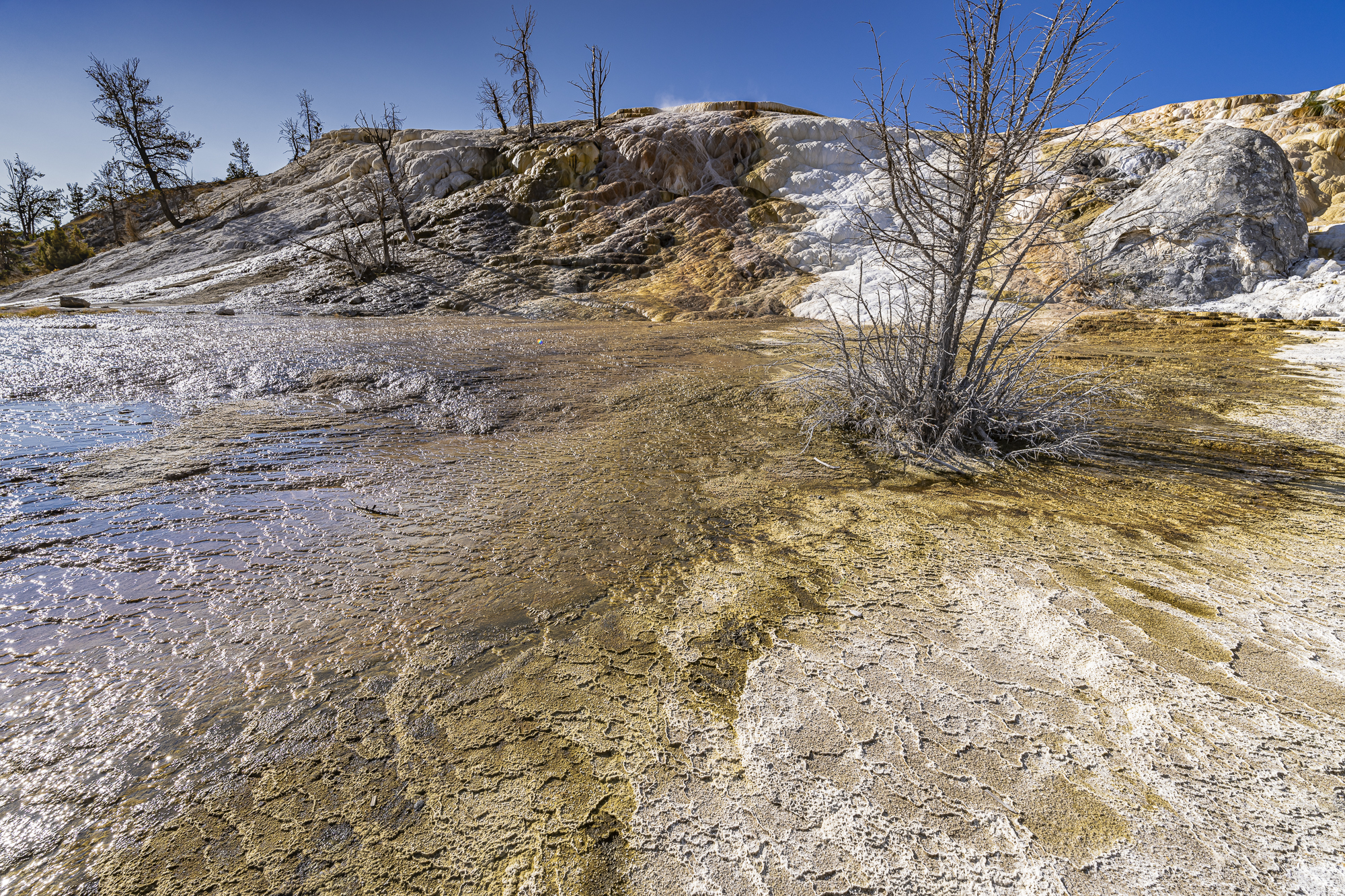
Pictured below is a relatively dry portion of the terraces which may be bleached white in the hot sun as the bacteria die when calcium-rich groundwater permanently shifts to a different location.
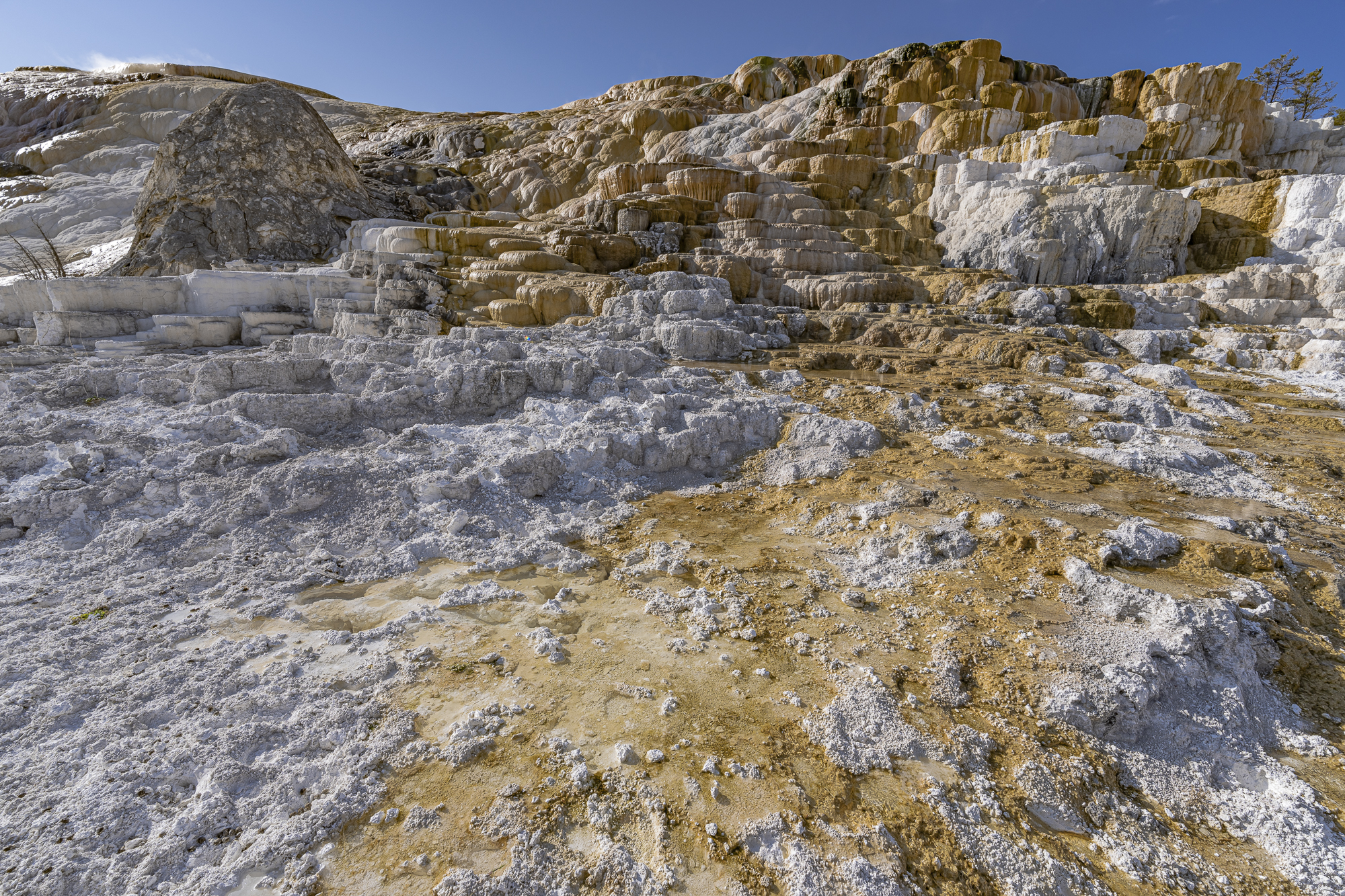
This is the case with the next image. Once again, the “story-telling ability of this 14mm lens shows sharp foreground textures, mid-ground topography, adjacent forest, and even broad sky with a large cloud formation.
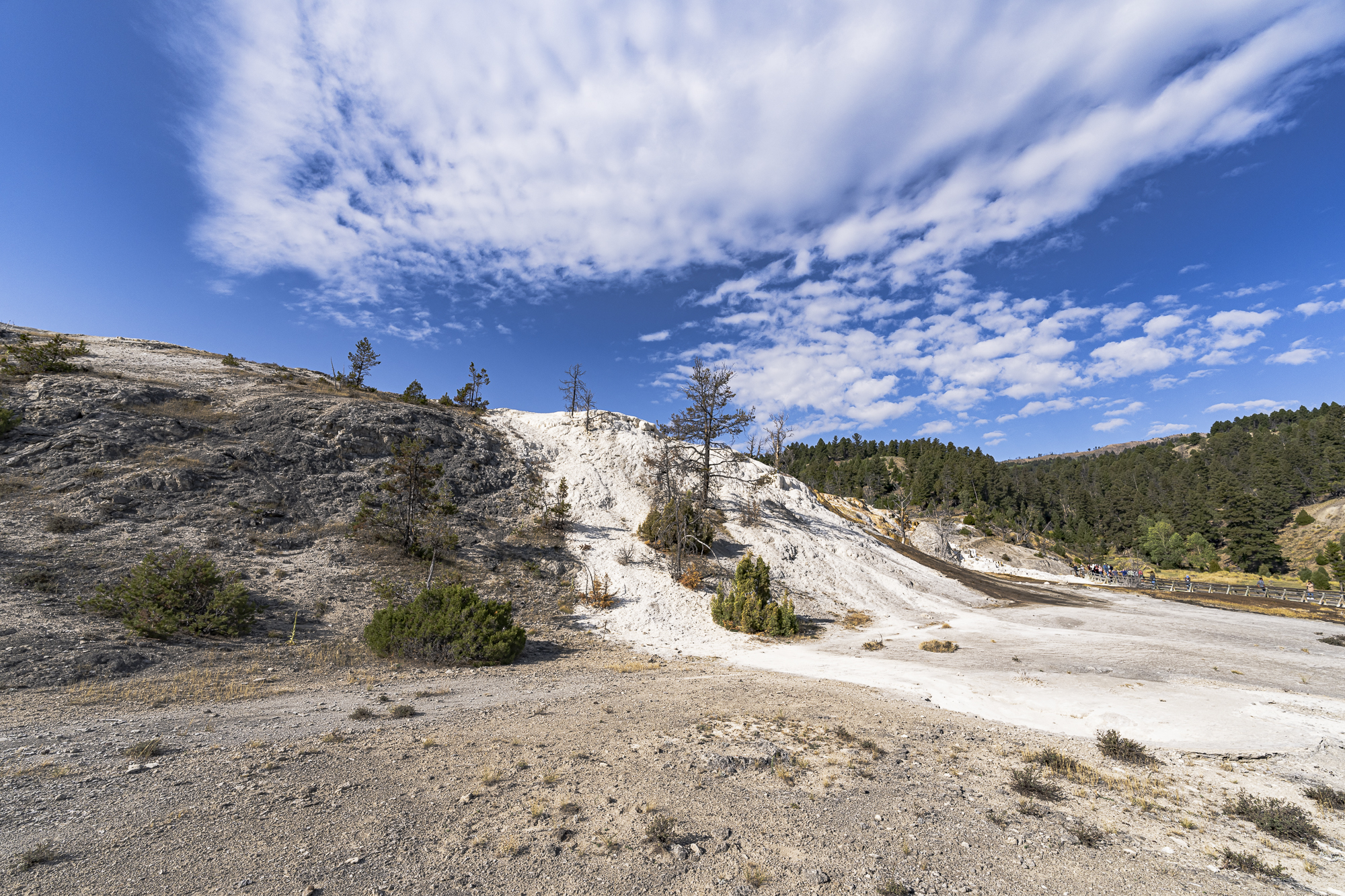
The interesting thing about Mammoth Hot Springs and other such sites is that the landscape is constantly changing. In the following two images, a small remnant of what was a dry white travertine section is slowly being infused with hot mineral water and its attending bacterial colonies to turn it brown.
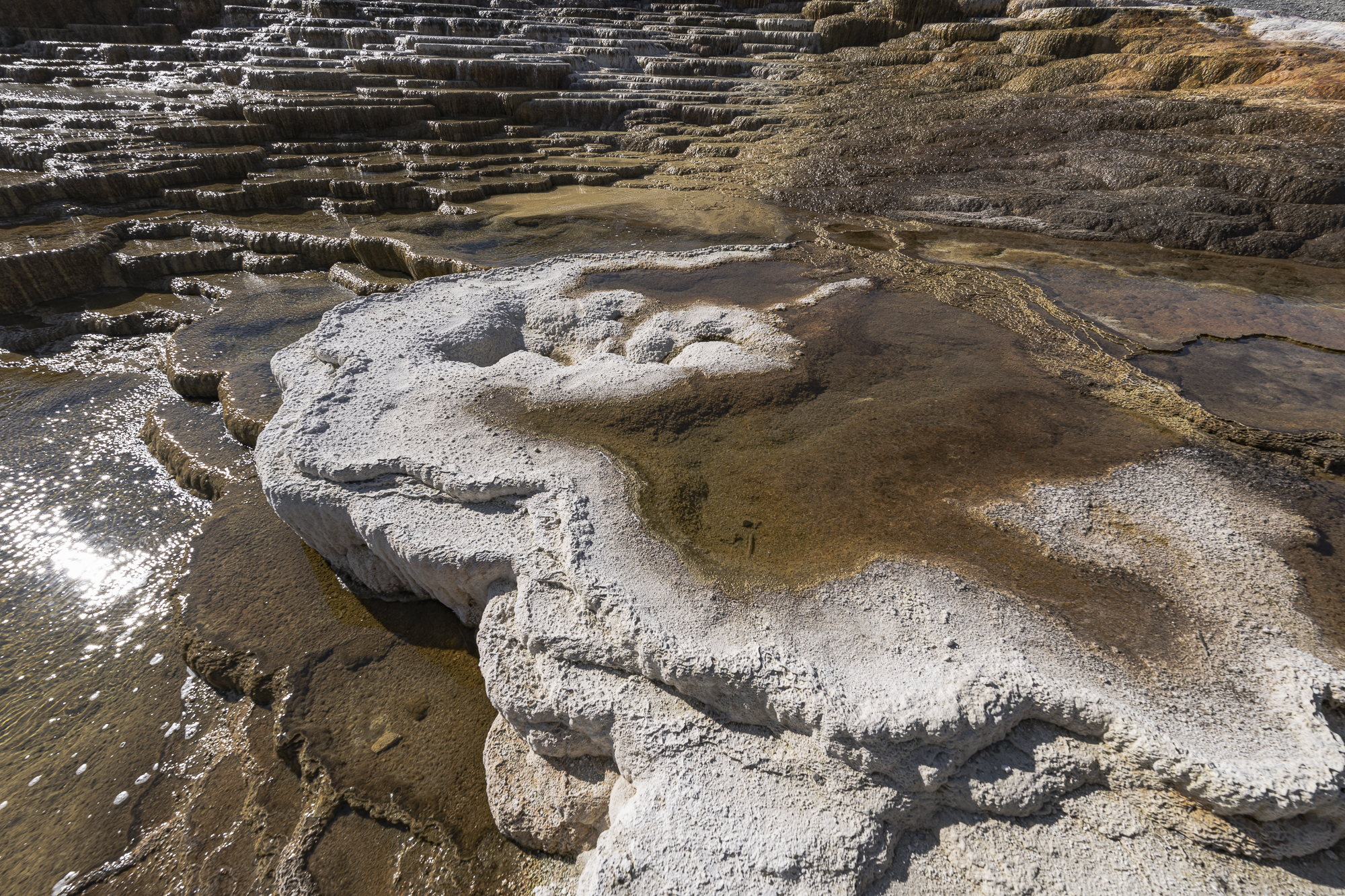
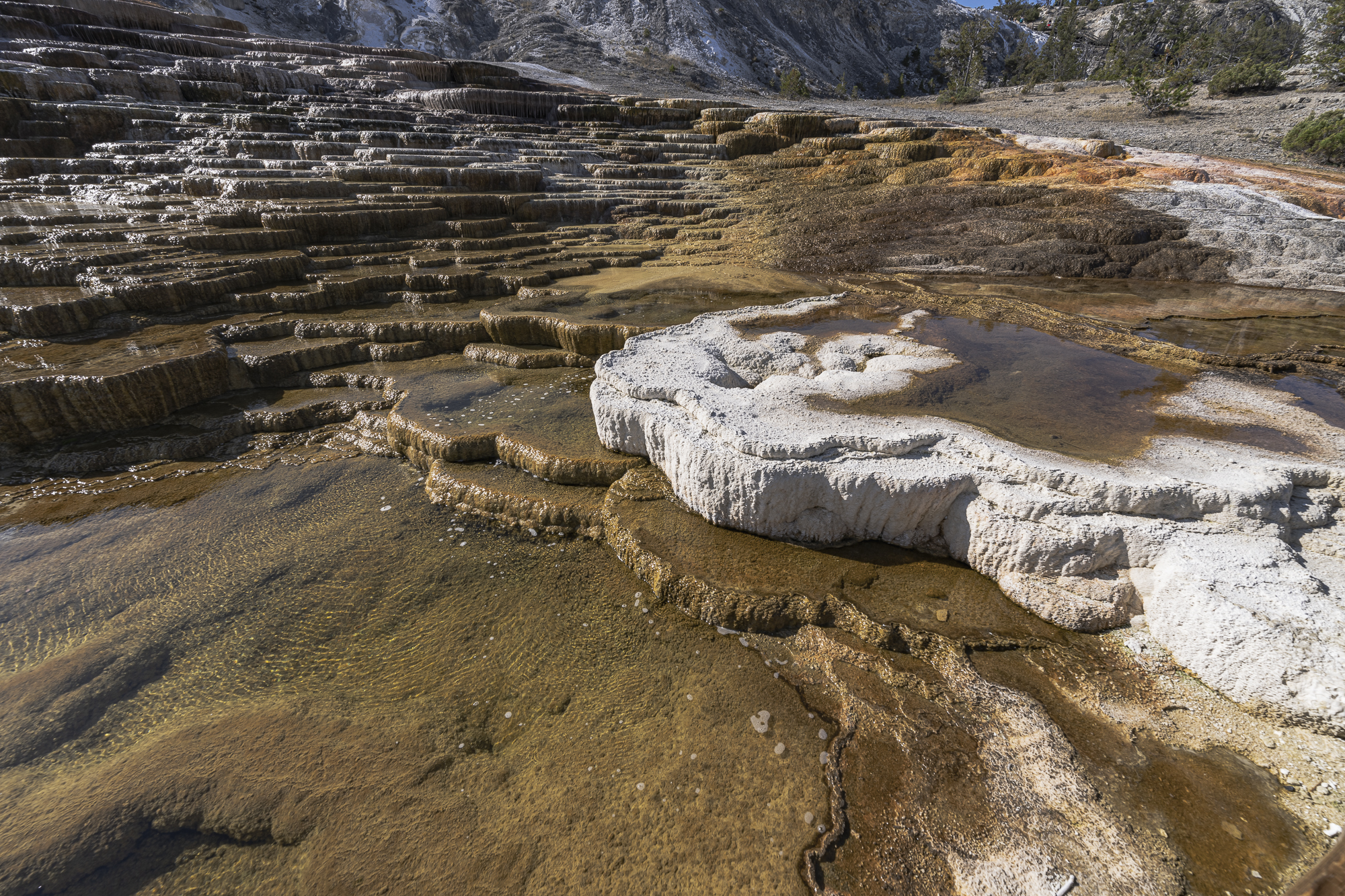
In many cases, as a new water flow covers a dry white patch of travertine it starts to turn a light yellow-brown color from bacteria taking hold. In the following two images, the direct sun reflecting off these light-colored terraces take on the sheen of metallic gold.
Don’t forget if you are a Silver or Gold member and signed in, you can click on an image to see it larger.
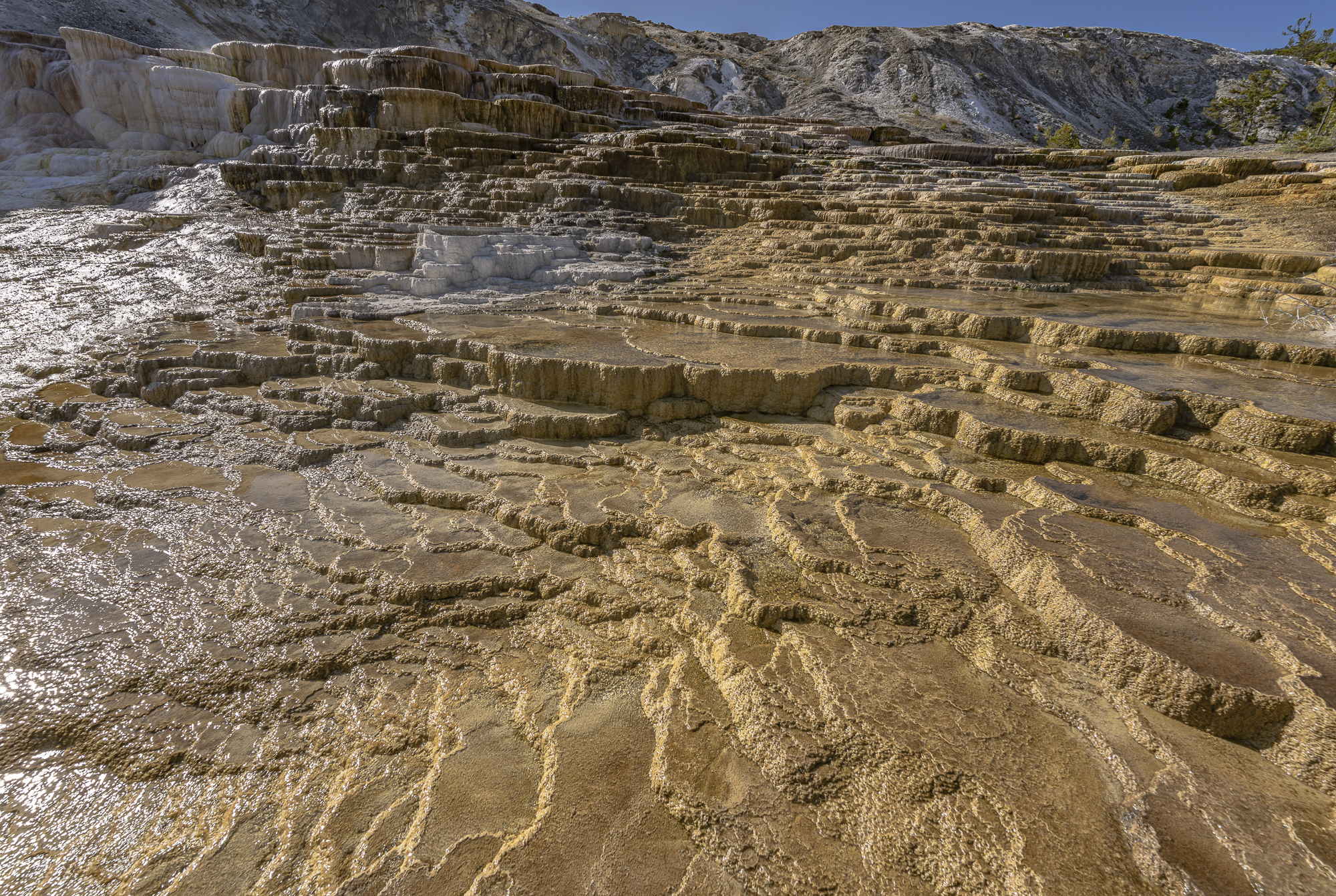
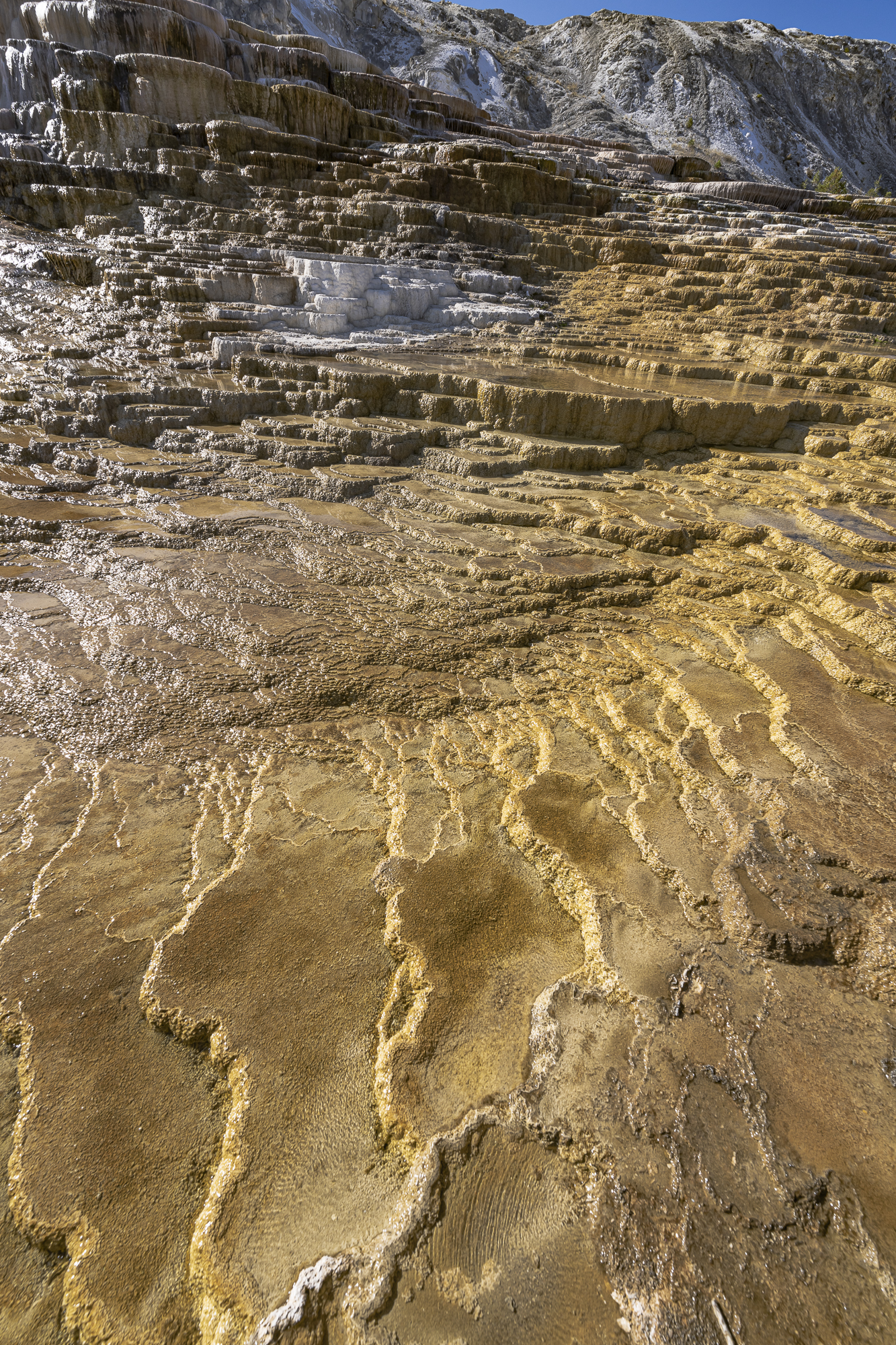
Bacterial staining of the underlying white travertine is often not uniform. The next image has narrow parallel bands of orange, brown and yellow as the waters seeped down the slope. Most likely, the darker brownish tones result from heavier water flows creating deeper staining, as the yellow and orange tones then turn brown.
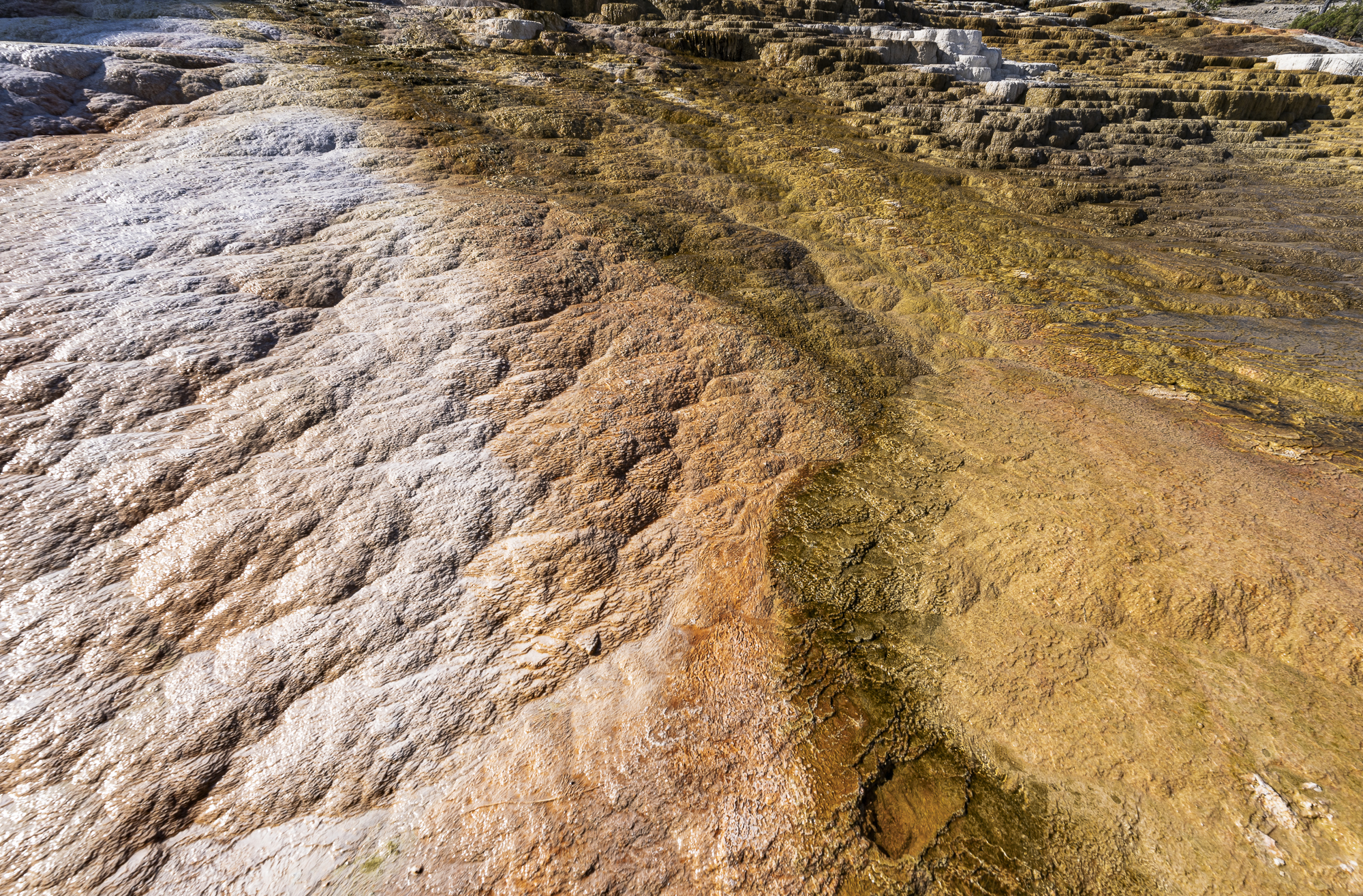
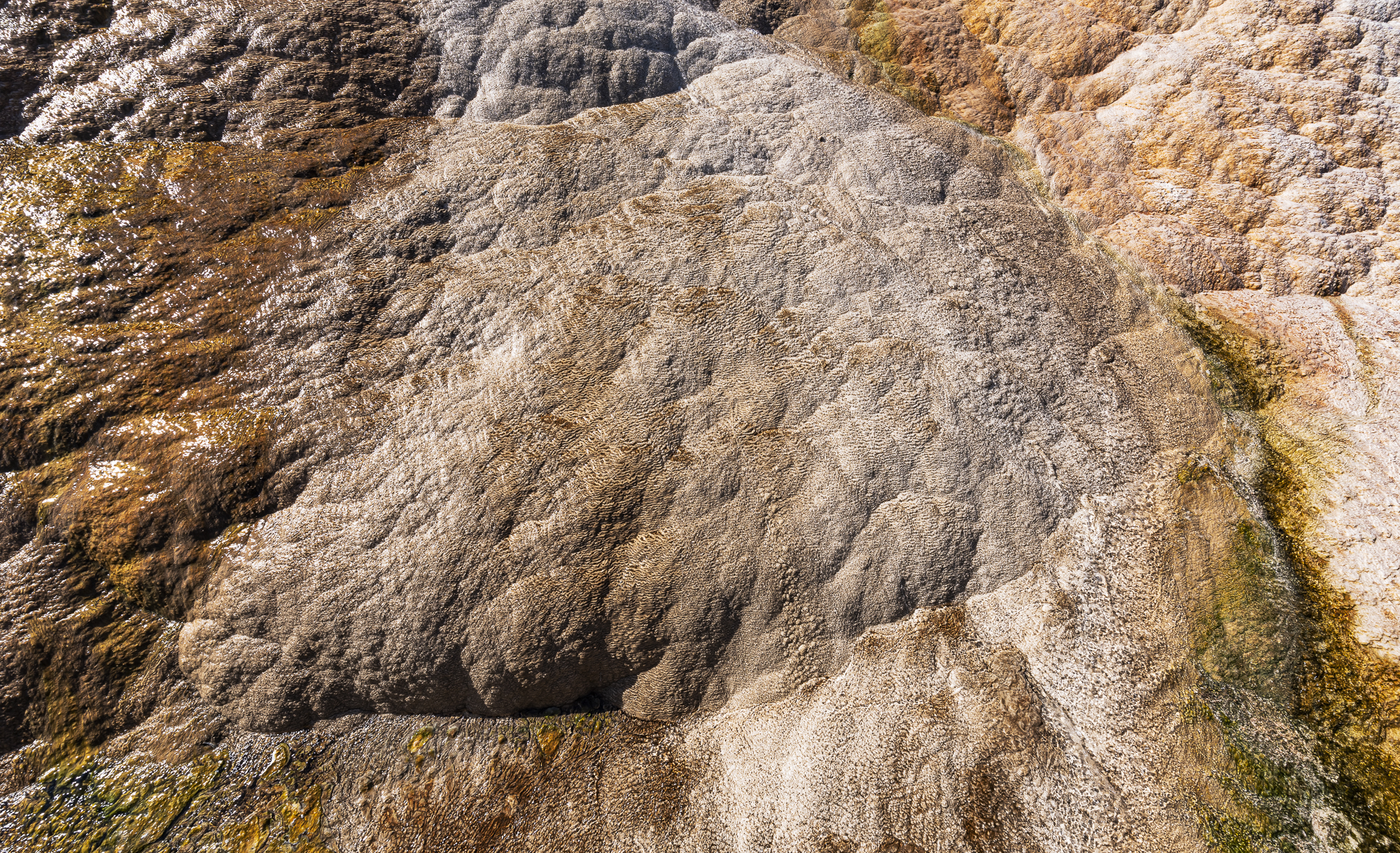
All the processes involved in creating these terraces are the result of unstable thin crust that is constantly deforming and developing new fissures and sealing off older ones. This process has built one of the largest hot springs terrace structures in the world over thousands of years. Like all Yellowstone NP thermal areas, the ground is not safe to walk on, as the possibility of breaking through the crust and being scalded, or worse, is high; and there is no predictability regarding what is safe or dangerous. Therefore, all such areas are fenced off for the protection of both visitors and exhibits.
I thought it would be fitting to have the last image in this Mammoth Hot Springs series end with a broad view of some of the terraces and neighboring terrain. Including the shadow of the omnipresent fencing along the miles of the boardwalk is a way of inferring the ongoing work that the Park Service performs to maintain an important balance between exploration and safety for park visitors as well as to preserve key land features.
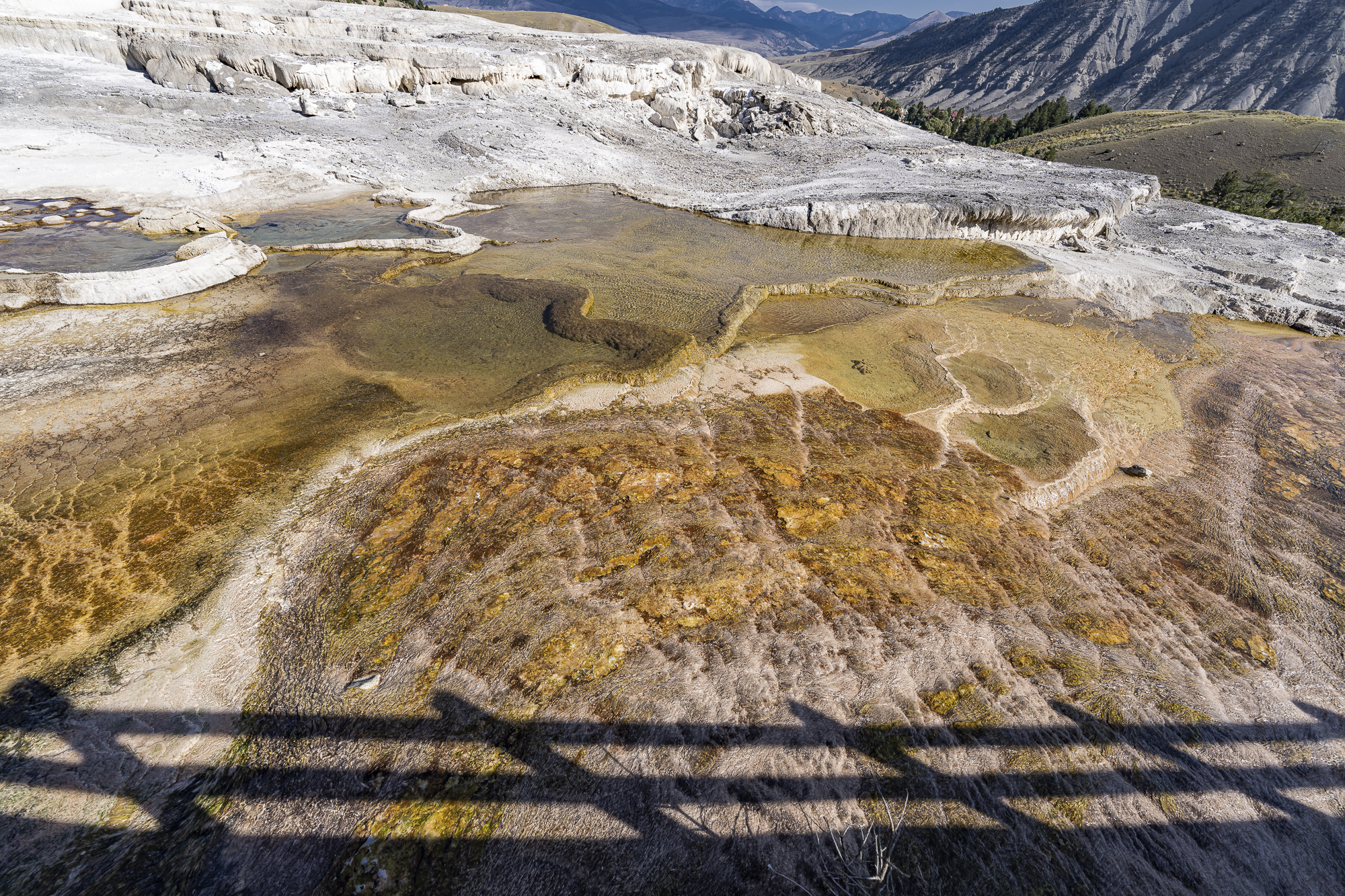
As it turned out, shifting my focus away from wildlife was a good decision. I limited my stay to one day in the northwest part of the park, which of course limited my opportunities to find and photograph resident fauna. However, during previous Autumn trips that I made to this part of the park I have always seen Elk and both Black Bear and Grizzlies. In particular, the grounds of the Mammoth Springs lodging and shopping facilities always hosted an Elk bull and his harem. They routinely rested on the lawns which Park Rangers roped off to keep visitors at a distance.
This time, there wasn’t a single Elk to be seen. I did see fairly fresh droppings on the ground that suggested the Elk had visited the preceding night but left before the crowds started building. It is true that the Park Service has increasingly discouraged visitors from either crowding or feeding resident wildlife. However, it doesn’t take a degree in Wildlife Management to know that almost all wild animals grow more uncomfortable staying near larger numbers of people and vehicles. This was the pattern I witnessed in all three National Parks during this trip.
Be sure to read Part III on Glacier NP, Montana
Harvey Stearn
November 2021
Sedona, AZ
To see the scope and essence of Harvey Stearn's photographic art please visit www.CameraStops.com. Mr. Stearn began photographing Western landscapes and wildlife at the age of 13, spent 50 years pursuing his passion in the field and in the darkroom before fully converting to digital photography in 2002. He developed color prints as well as monochrome, but switched over to digital capture and editing in 2002. Though he was a top executive for two large scale land development and home building corporations, he always found time for his fine art photography which won many awards. His work was exhibited in art museums in Southern California and Arizona, and was also featured in billboard advertisements and published in magazines. Mr. Stearn served on the California Arts Council for nine years, including two years as Chairman and another two as Vice Chairman. In addition, he was the founding Chairman of the John Wayne Airport Arts Commission in Orange County, California. Mr. Stearn’s work was sold through Arizona galleries for 15 years. In recent years he wrote 33 illustrated articles for PhotoPXL.com and 14 articles for Luminous-Landscape.com. In 2013 he published a book entitled “In Search of the Old West” which has been widely acclaimed. He was a guest lecturer on photography on a cruise ship visiting Chile, Argentina, Uruguay and the Falkland Islands. His work was among the top 100 images printed in NANPA's Showcase publications in 2019 and 2020. Images have been edited and selected for two new books on Landscape photography which will be published in late 2024 and early 2025.






